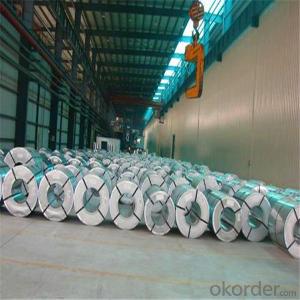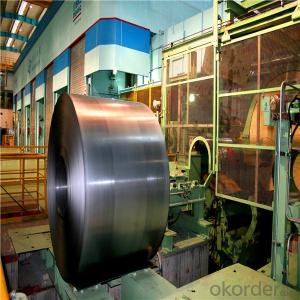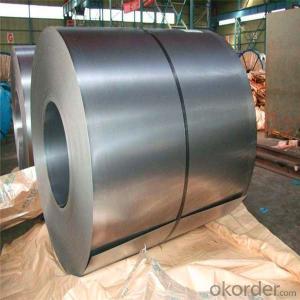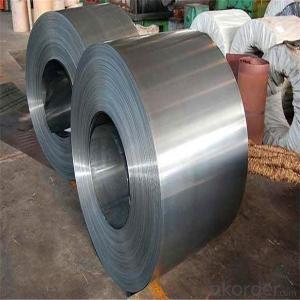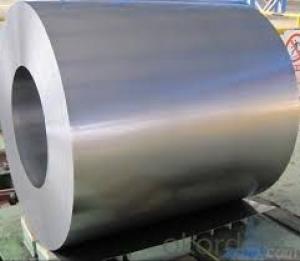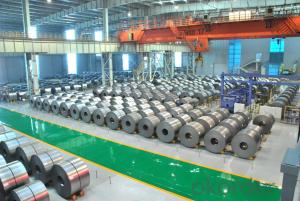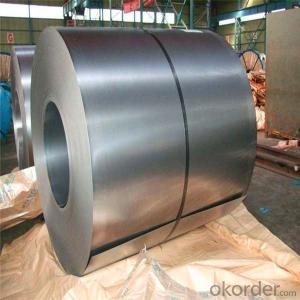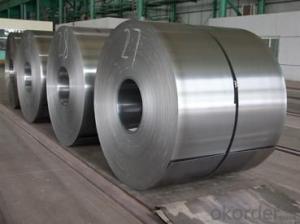SPCC Prime Cold Rolled Steel Coil/China Supplier
- Loading Port:
- China main port
- Payment Terms:
- TT OR LC
- Min Order Qty:
- 12 m.t.
- Supply Capability:
- 10000 m.t./month
OKorder Service Pledge
Quality Product, Order Online Tracking, Timely Delivery
OKorder Financial Service
Credit Rating, Credit Services, Credit Purchasing
You Might Also Like
Specification
Standard:
ASTM,GB,DIN,EN,JIS
Technique:
Cold Rolled
Shape:
Round
Surface Treatment:
Oiled,Bright
Steel Grade:
Q195,Q215,Q235
Certification:
ISO,SGS,BV,CE
Thickness:
0.18mm-1.8mm
Width:
1000mm-1600mm
Length:
according to weight
Outer Diameter:
according to weight
Net Weight:
10MT
Packaging:
Standard Export Packing
Product Description
Cold rolled steel coils/sheet/platesMaterial: Q195, SPCC, DC01---06, SPCC-DC, ST12--15
Specification:
Thickness: 0.2mm---2.0mm
Width: 600mm--1250mm
Length: 1200mm--6000mm
Application:Home appliance and general application
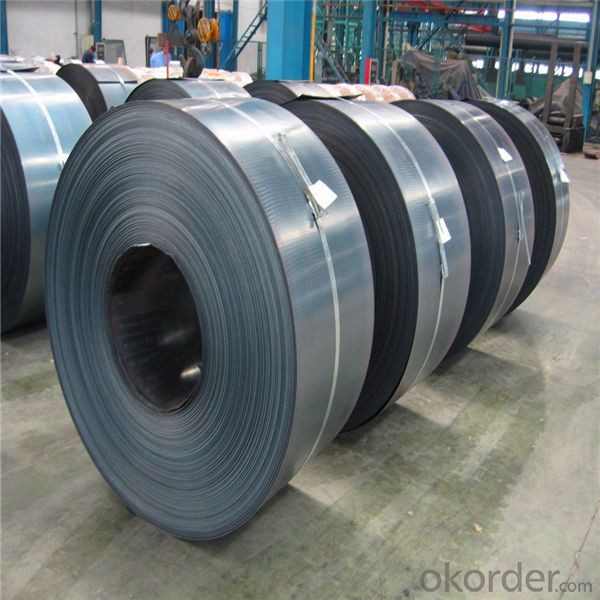
| Name: | Cold Rolled Steel Coils/Sheets |
| Technology: | Cold rolled |
| Standard: | GB/T3274, JIS G3302, EN10142^ |
| Steel Material: | Q195, Q235, SPCC, DC01, DC02... |
| Size: | a) Thickness: 0.15mm~3.5mm b) Width: 600mm-1530mm c) Length: Coil or cut as customer's request |
| Surface treatment: | Black, bright |
| Coil weight: | 4-10tons |
| Coil ID: | 508mm or 610mm |
| MOQ: | 25tons (25tons/20'GP) |
| Delivery time: | a) Seaworthy PP wrapping b) Plywood cases packing c) Can do the packing as client's requirement |
| Application: | Building material, roofing, household appliance, tube making, construction, making GI and PPGI, decoration and building, special for manufacturing washing machinery, Water heater and refrigerator. |
| Packing: | @ PE waterproof paper. @ 2 inside edge protection rings. @ 2 outside edge protection rings. @ 2 side protection disks. @ Inside protection cover (galvanized sheet). @ Outside protection covers (galvanized sheet). @ 3 circumferential straps. @ 4 radial straps |
| Inspection: | a) We have our own quality inspection system. b) We can accept any third party inspection |
- Q: I have been searching on pots and pans, how can I find out if it's really stainless steel, someone told me if a magnet sticks to it it's real stainless steel is this true?
- Mel: okorder /
- Q: and which one is better?i'm looking into buying some aftermarket headers, but companies make them in both chrome and stainless steel
- For headers go with stainless steel. Chrome holds heat in, and after a while it will discolor due to the high heat of the heads.
- Q: Why cold rolled stainless steel sheet is lower than cold rolled stainless steel coil?
- 304 stainless steel coil 2.0*1219*C spot price 18 thousand and 100 / ton, general tolerance at about 1.8mm.Coil price * actual thickness / reference thickness = flat price1.81*1.8/2=16.29
- Q: If steel can rust with saltwater... then why are ships made of steel? can't we just use other metals like aluminium etc?
- Ships are made of steel and also aluminum. Some minesweepers are made from fiberglass. Steel is a comparatively cheap and easily used material. But don't be confused with the type of steel that is used. Plates do not have to be replaced every year. In fact ship s can go for years with no major steel work, and this can be extended with proper maintenance like sand blasting and painting. There are many different steel alloys with different properties. Some of them resist rusting and instead of flaking they just form a powder like barrier. Check out this link.
- Q: my homework is a breif description on steel pipe. for plumbing/gas.please help me i dont have a clue where to start, something about the thread and where its used.Thanks,
- www.okorder
- Q: How do steel coils contribute to the manufacturing of steel furniture?
- Steel coils play a crucial role in the manufacturing of steel furniture. These coils, which are made of high-quality steel, serve as the primary raw material for the production of various furniture items. Firstly, steel coils are used to create the framework and structure of steel furniture. These coils can be easily cut, shaped, and welded into various shapes and sizes, allowing manufacturers to create sturdy and durable furniture frames. The flexibility of steel coils enables the production of furniture with intricate designs and unique shapes, providing both functional and aesthetic value. Additionally, steel coils are also used in the production of springs for furniture such as sofas and chairs. The elasticity and strength of the steel coils make them ideal for creating comfortable and supportive seating options. These coils are carefully formed and integrated into the furniture, ensuring that the seating surface provides the necessary resilience and flexibility for a comfortable experience. Moreover, steel coils contribute to the overall durability and longevity of steel furniture. Steel is known for its high tensile strength and resistance to wear and tear, making it an excellent choice for furniture that is subjected to heavy use and weight load. The use of steel coils ensures that the furniture can withstand years of regular use without compromising its structural integrity. Furthermore, steel coils are often treated with various finishes and coatings to enhance their appearance and protect them from corrosion. These coatings can be applied to the coils before they are shaped into furniture components, ensuring that the final product maintains its aesthetic appeal and remains resistant to rust and other forms of damage. In conclusion, steel coils are an essential component in the manufacturing of steel furniture. They provide the necessary strength, flexibility, and durability required to create sturdy furniture frames, comfortable seating surfaces, and long-lasting products. Without steel coils, the production of steel furniture would not be possible, and the quality and performance of the final products would be compromised.
- Q: How are steel coils tested for tensile strength?
- Steel coils are tested for tensile strength through a process called tensile testing. In this method, a small sample is taken from the steel coil and subjected to a controlled force until it breaks. The force applied during the test is gradually increased until the sample fractures. The maximum force required to break the sample is measured, and this provides valuable information about the tensile strength of the steel coil.
- Q: What are the different types of steel coil slitting machines?
- There are several different types of steel coil slitting machines, including rotary shear slitting machines, loop slitting machines, and tension slitting machines. Each type has its own unique features and advantages, but they all serve the purpose of cutting steel coils into narrower strips.
- Q: Ok, so im gonna get my tragus pierced and i was wondering which is better, titanium or stainless steel. I hear like everyone uses stainless steel , but is titanium better?Thanks
- all my piercings are with stainless steel..... i never had any problems with it honestly.... cause when i get my tragus pierced the lady is going to use stainless steel... cause when i got my navel done it was with stainless steel... most people cause have stainless steel they have to have other different types
- Q: How are steel coils used in the production of steel chains?
- Steel coils are used in the production of steel chains by being unwound and fed into a machine that shapes and forms the individual links of the chain. The steel coils provide the raw material needed to create the strong and durable chains, ensuring they have the necessary strength and integrity for various applications.
Send your message to us
SPCC Prime Cold Rolled Steel Coil/China Supplier
- Loading Port:
- China main port
- Payment Terms:
- TT OR LC
- Min Order Qty:
- 12 m.t.
- Supply Capability:
- 10000 m.t./month
OKorder Service Pledge
Quality Product, Order Online Tracking, Timely Delivery
OKorder Financial Service
Credit Rating, Credit Services, Credit Purchasing
Similar products
Hot products
Hot Searches
Related keywords
